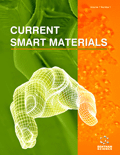Abstract
Aim: The design and synthesis of new molecules capable of forming self-assembled gels are indispensable to harvest new functional materials. Supramolecular gels have potential in many areas, particularly in biology and materials chemistry. Of the different types of applications, visual sensing of biologically relevant ionic analytes is a fairly recent trend. Here we describe naked-eye detection of fluoride ions involving sol-gel methodology.
Methods: To execute this, cholesterol substituted pyridinium salts 1-4 have been designed and synthesized, of which compounds 3 and 4 served as potential gelators for the naked-eye detection of F- ions in DMSO and DMSO-H2O (1:1, v/v), respectively.
Results: Addition of F- ions to the solutions of 3 and 4 in DMSO and DMSO: H2O (1:1, v/v) respectively, resulted in the formation of yellow and brown colored gels instantly at room temperature.
Conclusion: Gelation study reveals that not only the aromatic surface is crucial for the selfaggregation of molecules via π-π stacking interactions, but also polarity, rigidity, and conformational flexibility of the molecules that govern the intermolecular association of gelators are important. Moreover, the incorporation of fluorophore (naphthalene) as an aromatic surface in the molecular designs enables the gelator molecules to execute the sensing of F- with a high degree of sensitivity in the solution phase.
Keywords: Functional materials, cholesterol, pyridinium salts, supramolecular gel, F- sensing, fluorescence.
Graphical Abstract
 5
5





